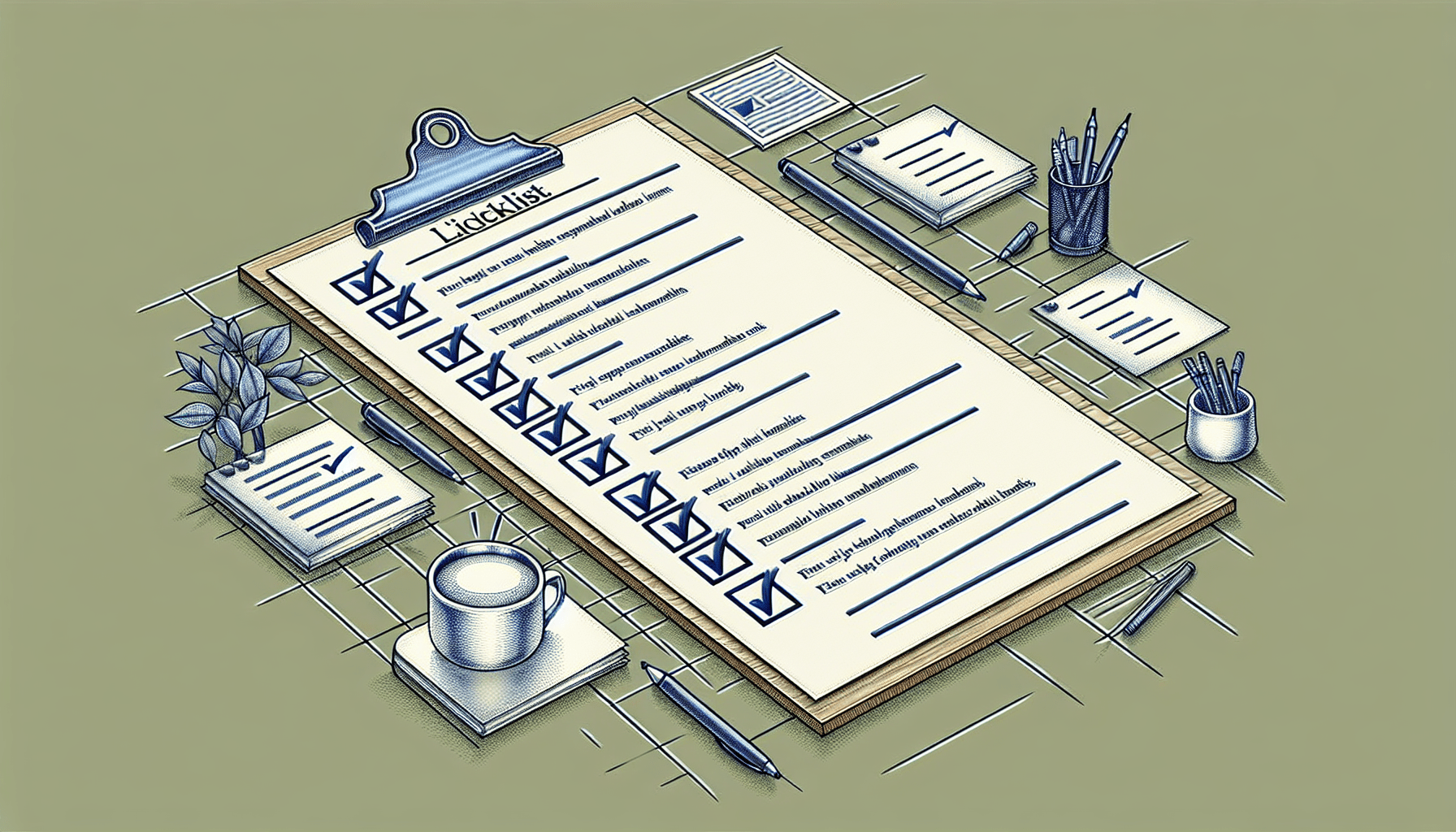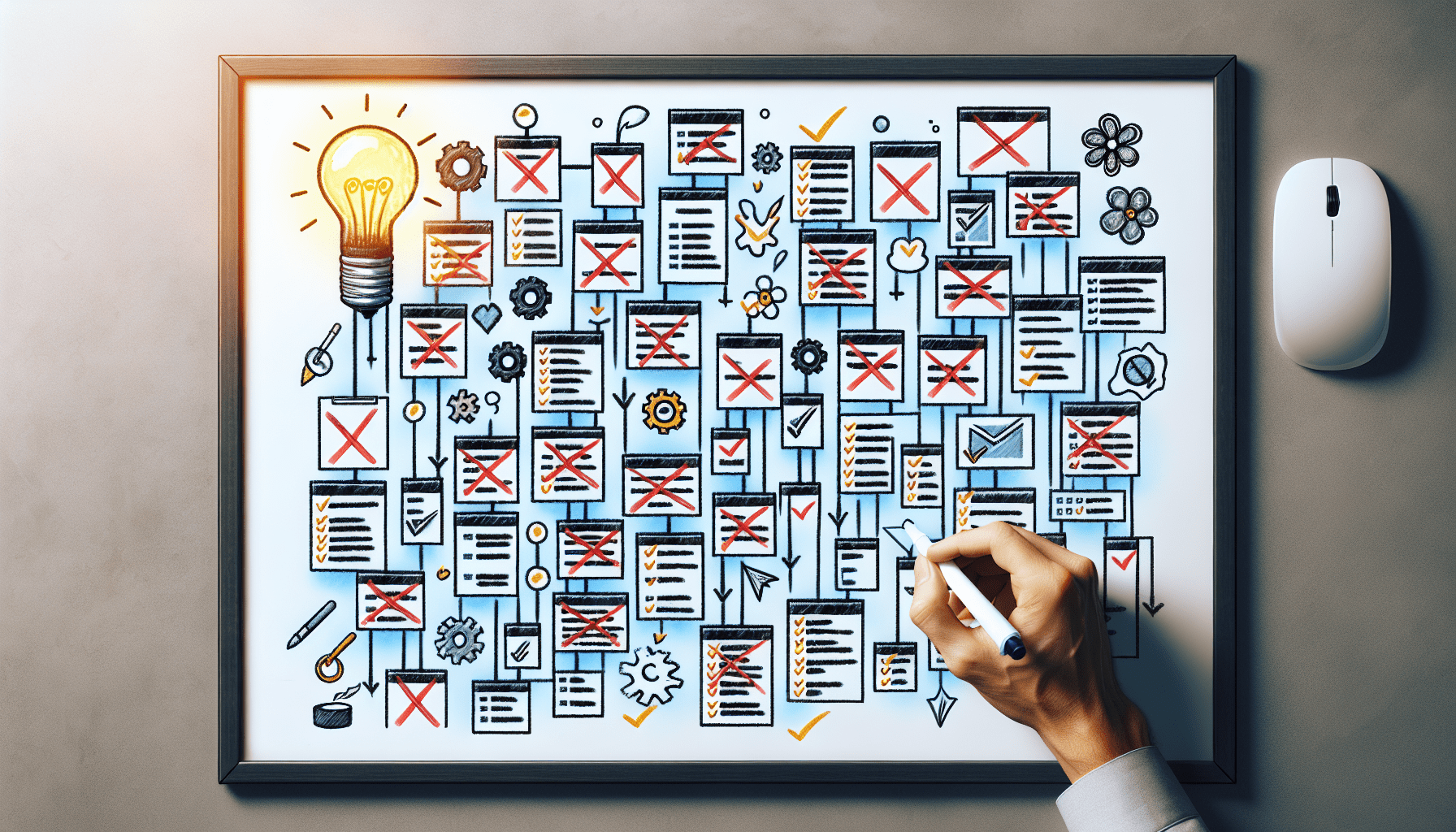
The Checklist Manifesto: How Checklists Can Prevent Overwhelm

In “The Checklist Manifesto: How Checklists Can Prevent Overwhelm,” discover the power of a simple tool that can revolutionize your productivity. With the ever-increasing demands of our fast-paced lives, it’s easy to become overwhelmed by the sheer number of tasks and responsibilities we have to juggle. However, by implementing the use of checklists, you can regain control, reduce stress, and ensure that nothing falls through the cracks. This article explores how checklists can be an effective solution for preventing overwhelm and provides valuable insights into the benefits of this often underestimated productivity tool.
Introduction
Definition of Overwhelm
Overwhelm refers to the feeling of being completely overcome or inundated by an excessive amount of tasks, responsibilities, or information. It is a state of being where you may feel stressed, anxious, and unable to effectively deal with the demands placed on you.
Impact of Overwhelm on Productivity
When you are overwhelmed, your productivity can suffer greatly. It becomes difficult to focus on tasks, make decisions, and efficiently manage your time. Overwhelm can lead to procrastination, decreased motivation, and a decline in the quality of your work. It is crucial to address and overcome overwhelm in order to maintain and enhance your productivity.
Importance of Checklists
Benefits of Checklists
Checklists are powerful tools that help you stay organized, focused, and on track. They act as a visual guide that outlines the tasks you need to complete and provide a sense of structure and clarity. With a checklist, you can easily track your progress, ensure that tasks are not forgotten or overlooked, and experience a sense of accomplishment as you check off items.
Checklists also help to reduce stress and anxiety by breaking down complex projects or overwhelming tasks into smaller, more manageable steps. They provide a clear roadmap and give you a sense of control over your workload. Furthermore, checklists enhance communication and collaboration within teams, ensuring that everyone is on the same page and accountable for their respective tasks.
Effective Use of Checklists
To make the most out of checklists, it is important to use them effectively. Firstly, create your checklist in a format that best suits your needs – whether it’s a digital checklist on your phone or a physical checklist on paper. Next, ensure that your checklist is easily accessible and visible, so you can refer to it regularly and keep track of your progress.
When creating a checklist, prioritize tasks based on urgency and importance. Break down larger tasks into smaller, actionable steps to make them more manageable. Include deadlines or time allocations for each task to help you stay organized and ensure that you are allocating your time effectively. Regularly review and update your checklist as needed, and don’t hesitate to delegate tasks or seek assistance when necessary.
Understanding Overwhelm
Causes of Overwhelm
Overwhelm can arise from various factors, such as having too many tasks or responsibilities to manage, facing tight deadlines, lacking clear priorities, experiencing information overload, or feeling unsupported in your workload. Personal factors like perfectionism, lack of self-care, and poor time management skills can also contribute to overwhelm.
Effects of Overwhelm on Mental Health
When you are overwhelmed, it not only affects your productivity but also takes a toll on your mental health. Overwhelm can lead to increased stress, anxiety, and feelings of being burnt out. It can also impact your confidence and self-esteem, making it harder to overcome challenges and perform at your best. Addressing overwhelm is crucial for maintaining your overall well-being.
The Checklist Manifesto
Overview of the Book
“The Checklist Manifesto: How Checklists Can Prevent Overwhelm” by Atul Gawande is a thought-provoking book that explores the power of checklists in different domains, ranging from complex surgical procedures to disaster response. Gawande emphasizes how checklists can improve performance, reduce errors, and enhance safety, even in high-stakes and high-pressure situations.
Author’s Perspective on Checklists
Gawande believes that checklists are not just simple tools, but a reflection of our ability to manage complexity. He argues that checklists provide a way to ensure that critical steps are not missed, even by experts who may be prone to errors due to their familiarity with the task. Gawande advocates for the adoption of checklists in diverse industries and highlights their potential to save lives and improve outcomes.
Checklists vs. Other Productivity Techniques
Comparison to Time Management
While time management techniques help you allocate and prioritize your time effectively, checklists complement these methods by providing a tangible breakdown of tasks and actions required. Time management focuses on the allocation of time, while checklists focus on the execution and completion of tasks within that allocated time.
Comparison to Prioritization Methods
Prioritization methods help you determine the order in which tasks should be completed based on their importance. Checklists, on the other hand, ensure that tasks are not forgotten or overlooked, regardless of their priority. By combining prioritization methods with checklists, you can strike a balance between urgency and importance while maintaining organization and accountability.
Comparison to the Pareto Principle
The Pareto Principle, also known as the 80/20 rule, suggests that 80% of your results come from 20% of your efforts. Checklists can be used in conjunction with the Pareto Principle to identify and prioritize the most impactful tasks. By tackling the critical 20% first and using a checklist to track progress, you can optimize your productivity and focus on the tasks that truly matter.
Structure of an Effective Checklist
Clear and Specific Tasks
An effective checklist includes clear and specific tasks that leave no room for ambiguity. Each task should be actionable and well-defined, ensuring that anyone referring to the checklist knows exactly what needs to be done. Avoid vague or general statements and instead provide concise instructions that can be understood easily.
Sequencing and Order of Tasks
The order of tasks in a checklist is crucial. Arrange tasks in a logical sequence that considers any dependencies or prerequisites. Prioritize tasks based on urgency or importance to guide your workflow. A well-structured checklist saves time and minimizes confusion by guiding you through the most efficient progression of tasks.
Inclusion of Time Allocation
To make the most of your time and prevent overwhelm, include time allocations for each task on your checklist. Estimate how much time each task will require and allocate it accordingly. By incorporating time allocation into your checklist, you can ensure that you are working efficiently and staying on track with your deadlines.
How Checklists Prevent Overwhelm
Breaking Down Complex Tasks
Checklists are particularly effective in preventing overwhelm by breaking down complex tasks into manageable steps. By decomposing a large project into smaller tasks, you can tackle them one at a time, making progress and feeling a sense of accomplishment. This systematic approach helps to alleviate overwhelm and provides a clear path forward.
Providing Mental Clarity
When faced with numerous tasks and responsibilities, it’s easy to become overwhelmed and lose focus. Checklists provide mental clarity by acting as a visual guide and reminder of what needs to be done. They help you stay organized and prioritize tasks, reducing mental clutter and allowing you to concentrate on one task at a time.
Reducing Decision Fatigue
Decision fatigue occurs when you are faced with making too many decisions, which can lead to decreased productivity and decision-making quality. Checklists alleviate decision fatigue by providing a framework that outlines the necessary steps, allowing you to focus on execution rather than constantly making decisions on what to do next. This frees up mental energy for more critical decision-making.
Applying Checklists in Different Areas
Workplace Checklists
Checklists are invaluable in the workplace, where they enhance efficiency, consistency, and productivity. They can be used in various scenarios, such as project management, quality assurance, employee onboarding, or even daily task management. Workplace checklists streamline workflows, reduce errors, and ensure that nothing falls through the cracks.
Personal Checklists
Personal checklists help individuals stay organized and on top of their personal responsibilities and goals. They can be used for managing household tasks, personal finances, self-care routines, or even long-term life goals. Personal checklists provide structure and clarity in daily life, enabling you to prioritize tasks and make progress towards your desired outcomes.
Checklists in Healthcare
In the healthcare industry, checklists have been proven to be powerful tools in preventing medical errors, enhancing patient safety, and improving outcomes. From surgical procedures to medication administration, checklists allow healthcare professionals to follow standardized protocols, reducing the likelihood of mistakes and ensuring comprehensive patient care.
Tips for Creating Effective Checklists
Keeping Checklists Simple
To create effective checklists, simplicity is key. Keep your checklist concise, with clear and concise tasks that can be easily understood and executed. Avoid cluttering the checklist with unnecessary details or information that may confuse or distract from the primary purpose of the checklist.
Reviewing and Revising Checklists
Regularly review and revise your checklists to ensure their relevance and effectiveness. As you gain experience and encounter new challenges, adjust your checklists accordingly. Seek feedback from others who use the checklist to identify potential improvements or areas that need clarification. By regularly updating and refining your checklists, you can consistently enhance their value and usefulness.
Utilizing Technology for Checklists
In today’s digital age, technology offers a wide range of tools and applications that can enhance the effectiveness of checklists. Consider utilizing digital checklist apps or software that provide features such as reminders, collaboration, and integration with other productivity tools. Technology can streamline checklist management and increase accessibility, making it easier to stay organized and on track.
Conclusion
Harnessing the Power of Checklists
Checklists are invaluable tools for preventing overwhelm, enhancing productivity, and ensuring that critical tasks are not overlooked. By using checklists effectively, you can break down complex tasks, maintain mental clarity, and reduce decision fatigue. Checklists provide structure, organization, and accountability, helping you stay on top of your responsibilities and achieve your goals.
Overcoming Overwhelm with Checklists
Overwhelm can take a toll on your productivity and mental well-being. However, by harnessing the power of checklists, you can overcome overwhelm and regain control. Whether in the workplace, personal life, or healthcare industry, checklists offer a proven and practical approach to managing complexity, improving efficiency, and reducing stress. Embrace the checklist manifesto and take the first step towards a more organized and productive life.






















